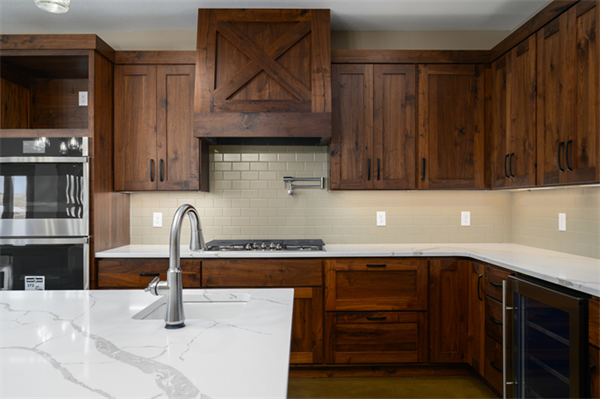How to Live Without a Kitchen During Your Remodel

Remodeling your kitchen can feel like a major life disruption, but with the right planning, you can maintain your daily routines and keep meals on track. Steve Gentry Construction understands that going without a fully functional kitchen doesn’t have to mean takeout every night or chaotic mornings. By setting up a makeshift workspace, leveraging smart meal strategies, and selecting the right tools, you can navigate the renovation period with minimal stress and maximum efficiency.
In this guide, we’ll explore five key areas to help you live without a kitchen during your remodel: Setting Up a Temporary Kitchen to Keep Daily Life Running; Meal Planning and Cooking Strategies Without a Full Kitchen; Essential Small Appliances That Make Kitchen-Free Living Easier; Staying Organized: Storing Food, Utensils, and Supplies During a Remodel; and When to Dine Out, Order In, or Use Meal Services During Construction.
Whether you’re midway through a complex kitchen remodeling project or just planning, these practical tips will keep you fed, organized, and stress-free throughout the process.
Setting Up a Temporary Kitchen to Keep Daily Life Running
Start by choosing a dedicated space to set up a temporary kitchen, such as a sturdy folding table in the garage or a spare countertop in another room. Position it near power outlets for appliances and ensure good ventilation if you use a portable cooktop. Cover surfaces with plastic sheeting or a heat-resistant mat to protect against spills and heat damage.
Equip your temporary kitchen with a microwave, mini-fridge, and a camping stove or induction burner. Keep a dish tub for washing utensils and a bin for trash. Place hand sanitizer or a small sink set up close by to maintain hygiene when a full sink isn’t available.
Establish a cleanup routine at the end of each day. Store utensils and cookware in labeled plastic bins or a tool caddy. Rotate supplies based on project progress to avoid clutter. These steps allow you to continue cooking simple meals even while your main kitchen is undergoing renovation.
Meal Planning and Cooking Strategies Without a Full Kitchen
Try to plan meals that require minimal equipment and prep. One-pot dishes like soups, stews, and pasta can be made in a single pot on an induction burner or camping stove. Batch-cook ahead of the remodel start date and freeze individual portions for grab-and-go convenience.
Incorporate no-cook options such as salads, sandwiches, and charcuterie boards. Stock up on fresh produce, canned beans, and precooked grains. Use pre-chopped or frozen vegetables to reduce prep time and cleanup.
Schedule grocery deliveries or curbside pickups to minimize store trips. Keep a running shopping list and track perishables using a chalkboard or app. By organizing meals around your renovation timeline, you’ll avoid impulse orders and reduce food waste.
Essential Small Appliances That Make Kitchen-Free Living Easier
Utilizing smaller appliances, such as a compact microwave or toaster oven, can provide quick reheating and baking capabilities. A multi-cooker like an Instant Pot or slow cooker expands your cooking options—prepare rice, stews, and even steamed vegetables with minimal oversight.
Consider an electric skillet or griddle for frying and sautéeing, as well as a portable induction cooktop for precise temperature control. A mini-fridge keeps perishables fresh, while a countertop freezer chest holds bulk items and pre-prepared meals.
When choosing appliances, focus on size, power requirements, and ease of cleaning. Look for models with removable parts that fit in your temporary sink tub. Store cords and accessories in labeled bins to keep your workspace organized.
Staying Organized: Storing Food, Utensils, and Supplies During a Remodel
Use stackable, airtight containers for pantry staples. Label each container with contents and date. Group items by meal type—such as breakfast, snacks, and dinner—to simplify retrieval.
Store utensils in a portable caddy or magnetic strip on a nearby wall. Hang measuring spoons and spatulas on hooks. Keep paper plates, cups, and disposable cutlery in a designated bin to save dishwasher space.
Maintain an inventory checklist and update it daily. Remove empty containers promptly and replenish stock on a weekly basis. These organization tactics reduce decision fatigue and keep your temporary kitchen running smoothly.
When to Dine Out, Order In, or Use Meal Services During Construction
Identify high-intensity workdays—when demolition or plumbing is underway—as ideal dine-out or delivery days. This prevents dust and noise from interfering with your cooking setup and keeps your temporary kitchen clean.
Evaluate local meal kits or prepared meal services for days when you need a reliable backup. Compare costs per serving and look for services offering balanced nutrition and minimal packaging. You can also try to coordinate your schedule with contractors’ timelines to plan dine-out nights in advance.
How Steve Gentry Construction Supports Your Kitchen Remodel Journey
Steve Gentry Construction in Rochester, MN, offers full-service kitchen remodels, including design consultation, permit coordination, and professional installation of cabinetry, countertops, and fixtures. Our project managers work with you to plan temporary kitchen setups, streamline renovation phases, and minimize downtime.
Call 507-208-4501 or contact us to schedule a consultation. We’ll help you keep daily life running smoothly while we transform your kitchen into a space you’ll love!